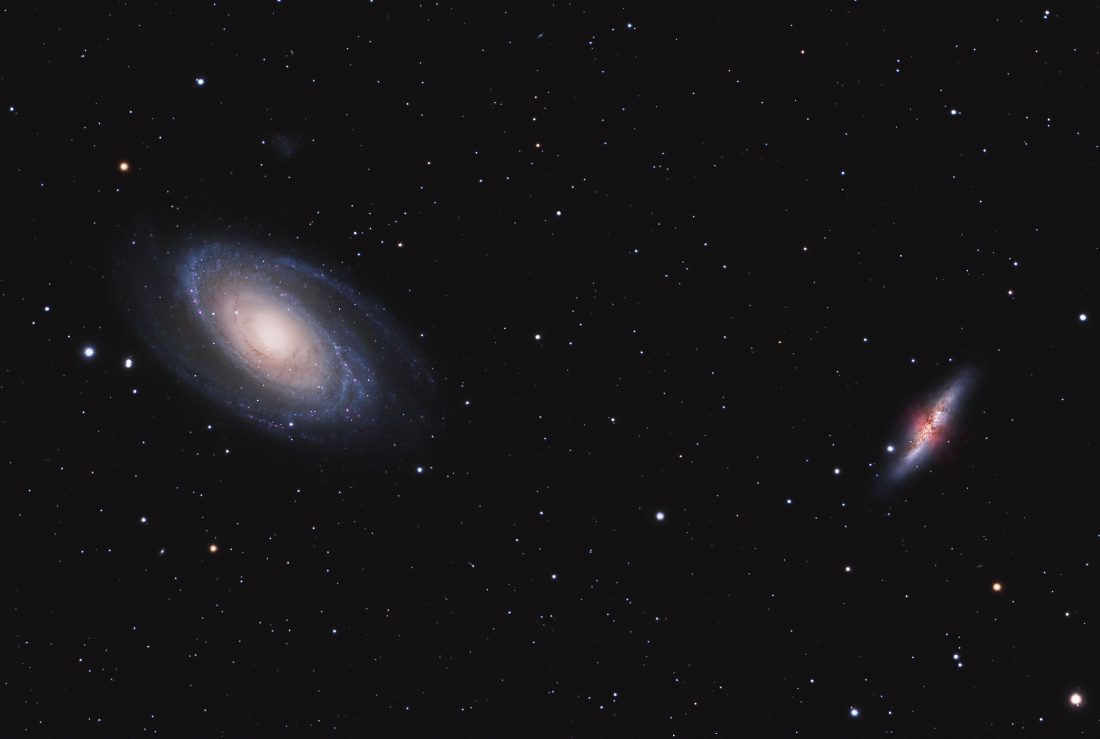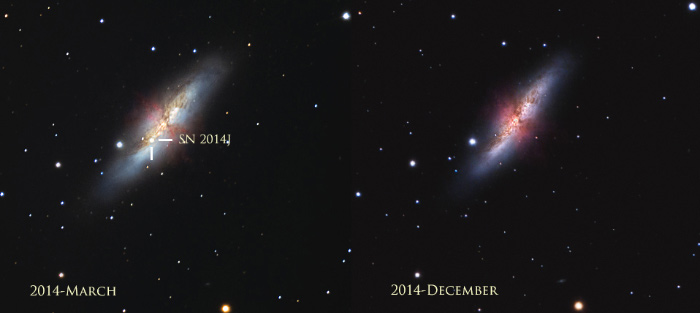Technical details:
Location / Date: Outside of Ramnäs, Västmanland, Sweden / 2014-December
Optics: Skywatcher Explorer 190MN
Mount: 10 Micron GM1000 HPS (Unguided)
Camera: Canon EOS 100D (Modded with Baader ACF filter)
Exposure: 57x 240 seconds, all shot on ISO 3200 (cumulative exposure time is 3 hours and 48 minutes)
Processing: Pixinsight and Photoshop
Image details:
Messier 81 (also known as NGC 3031 or Bode's Galaxy) is a spiral galaxy about 12 million light-years away in the constellation Ursa Major.
Messier 81 was first discovered by Johann Elert Bode in 1774.Consequently, the galaxy is sometimes referred to as "Bode's Galaxy".
In 1779, Pierre Méchain and Charles Messier reidentified Bode's object, which was subsequently listed in the Messier Catalogue.
Due to its proximity to Earth, large size and active galactic nucleus (which harbors a 70 million solar mass supermassive black hole),
Messier 81 has been studied extensively by professional astronomers.
Messier 82 (also known as NGC 3034, Cigar Galaxy or M82) is a starburst galaxy about 12 million light-years away in the constellation Ursa Major.
It is about five times more luminous than the whole Milky Way and one hundred times more luminous than our galaxy's center. The starburst activity is thought to
be triggered by interaction with neighboring galaxy M81. As the closest starburst galaxy to our own, M82 is the prototypical
example of this type of galaxy. In 2014, in studying M82,
scientists discovered the brightest pulsar yet known, designated M82 X-2. SN 2014J, a type Ia supernova, was observed in the galaxy on 21 January 2014. See left image below for SN 2014J I captured 2014-March when it still was visible. The image on the right is a crop from the image above where it is no longer visable. Isn't it facinating how a single star can outshine a whole galaxy!
M81, and M82 is a member of the M81 Group. Messier 81 is the largest galaxy in the M81 Group, a group of 34 galaxies located in the constellation Ursa Major. At approximately 11.7 Mly (3.6 Mpc) from the Earth,
it makes this group and the Local Group, containing the Milky Way, relative neighbors in the Virgo Supercluster.
Gravitational interactions of M81 with M82 and NGC 3077 have stripped hydrogen gas away from all three galaxies, forming gaseous filamentary structures in the group.
Moreover, these interactions have allowed interstellar gas to fall into the centers of M82 and NGC 3077, leading to vigorous star formation or starburst activity there.
(Information from Wikipedia)







